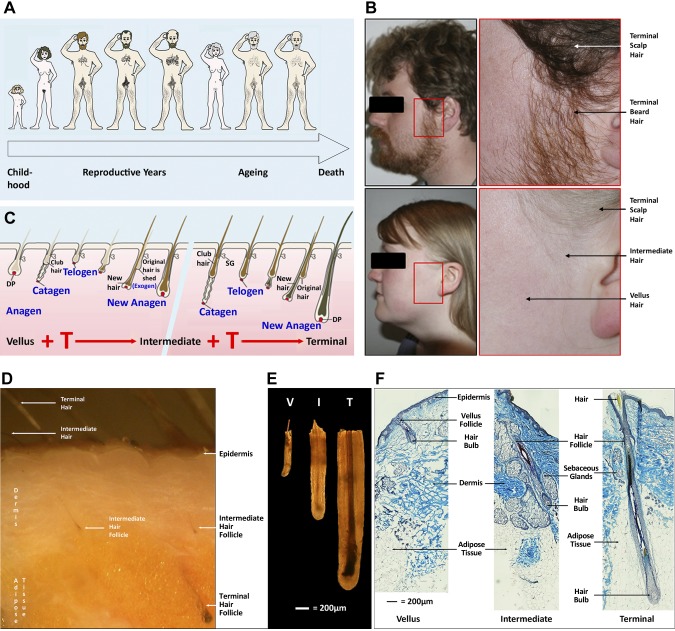Figure 1.
Human hairs and hair follicles vary in size in different body areas during human lifespan. A) Hair changes during the human life cycle. B) Male androgen levels stimulate facial hair follicles to form large beard hairs, whereas female levels only promote intermediate hair growth in the preauricular (before the ear) region. Photographs of a 27-yr-old man and 26-yr-old woman demonstrate terminal scalp and beard hair, intermediate preauricular female hair, and vellus hair (photographer: M.R.C.). C) Androgens drive changes in hair follicle size and, thus, the new hair size over successive hair growth cycles. This diagrammatic representation of the hair cycle shows a vellus hair follicle that is changing its size and producing a larger more pigmented hair during successive hair cycles. The gap represents additional cycles that may be necessary to encompass the major changes between vellus and terminal follicles. D) Human female facial skin showing terminal and intermediate hair follicles growing in the skin. Terminal hair follicles and their pigmented hairs are more visible than the smaller, shorter intermediate follicles and their paler hairs (photographed under a dissecting microscope). E) Comparison of human vellus, intermediate, and terminal follicles. Different types of follicles that were isolated from human skin by microdissection photographed under a dissecting microscope showing differences in diameter and pigmentation. F) Histologic sections of facial skin showing the structure of tiny vellus, larger intermediate, and large terminal follicles. Frozen sections of female facial skin were stained histologically with SACPIC stain to compare the different types of anagen follicles, particularly the depth beneath the skin and diameter. Note that only terminal follicles project into the s.c. adipose tissue (9). I, intermediate; T, terminal; V, vellus.

